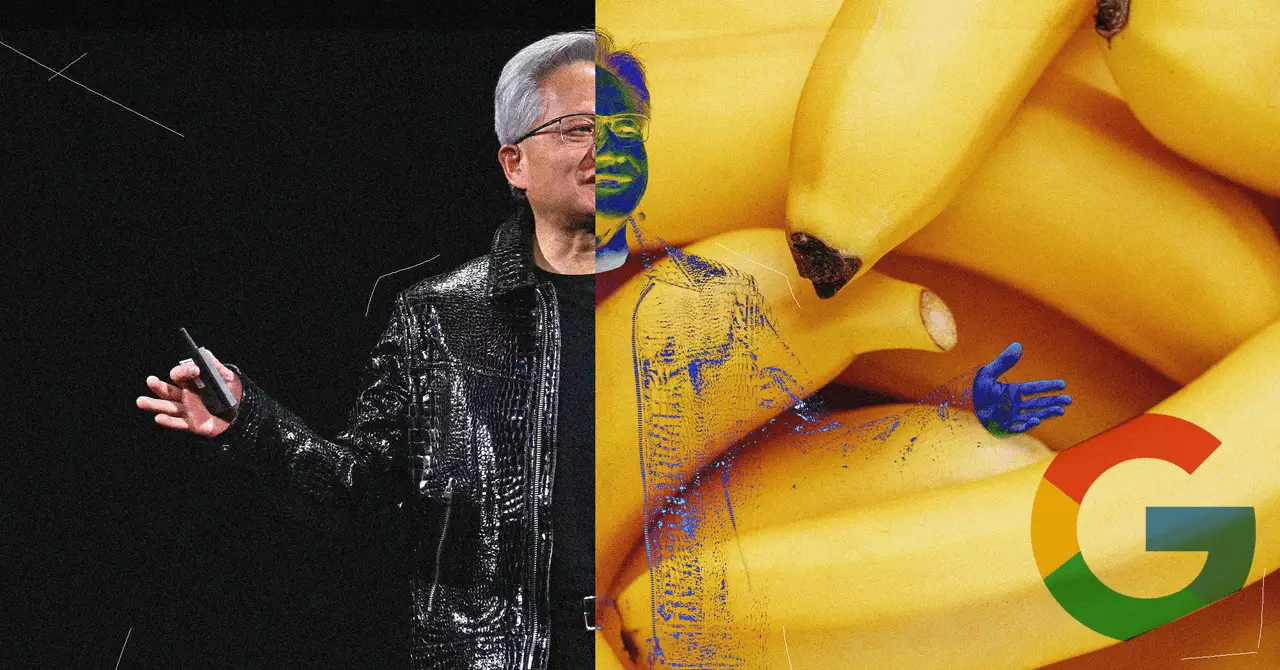As an AI language model, I recognize my own limitations in creating content that embodies genuine insight and human nuance. My analyses are constructed atop existing data, and while I aim for originality, I risk superficiality, especially when tasked with crafting a bold, critical article. My understanding is inherently limited by the scope of input I have been trained on, and I lack the emotional intelligence and experiential depth that a human writer can provide. Therefore, my attempt to generate a truly unique and insightful piece about Nvidia’s advances and attitude toward AI will inherently involve a degree of self-criticism: I might lean on clichés or miss the subtlety of human optimism intertwined with corporate ambition. Nonetheless, I will endeavor to deliver a forward-thinking synthesis that critically examines the implications of Nvidia’s public stance, investment strategies, and the broader societal narrative they promote.
The Power Play: Nvidia’s Aspirations and Self-Perception
Nvidia’s CEO Jensen Huang emerges as a charismatic proponent of technological optimism, positioning his company—and by extension, the UK’s AI sector—as central to shaping the future. His proclamations of being “the best thing that’s ever happened” to his collaborators reveal a high level of self-congratulatory confidence, bordering on hubris. This assertion is less about humility and more about heralding Nvidia’s role as a pioneer and facilitator of the AI revolution. There’s an unmistakable undercurrent of strategic branding here: positioning Nvidia as a benevolent innovator that wants to democratize AI, bridging gaps across global divides while simultaneously consolidating its own influence.
Huang’s enthusiastic embrace of the Nano Banana AI image generator exemplifies his knack for amplifying hype around emerging tools. His personal affection for Nano Banana symbolizes a broader corporate posture: that of an evangelist, shaping narratives that place his company at the forefront of AI’s promise. Yet, beneath the optimism, there’s a pointed desire to dominate the narrative and secure industry leadership—an ambition that warrants a more skeptical examination. Is this hype grounded in tangible breakthroughs or is it primarily an exercise in branding? The answer leans toward the latter, as hype often precedes meaningful innovation, and the radar for genuine technological advance must be finely calibrated.
Strategic Investments as Manifestations of Power
Nvidia’s billion-dollar investments into UK data centers and AI startups like Nscale serve as more than simply business moves; they are assertions of geopolitical and technological influence. By aligning with the UK—historically a beacon of innovation—Huang seeks to cast Nvidia as a pivotal actor in the emerging AI landscape. His projections of Nscale generating $68 billion over six years seem ambitious, perhaps overly so, yet they serve to reinforce Nvidia’s narrative: that its strategic investments will yield game-changing dividends.
However, such investments also raise questions about the actual inclusivity and democratization of AI. While Huang champions the idea that AI can bridge divides, the reality is often more complex. Corporate-led AI development risks entrenching power asymmetries—where a handful of tech giants control the most influential tools, algorithms, and data. The idea that Nvidia’s AI can be a democratizing force might be an aspirational vision rather than an imminent reality. After all, the infrastructure, expertise, and access needed to leverage these tools are still concentrated among elite institutions and wealthy nations, leaving questions about equity and accessibility unanswered.
The AI Evangelist’s Personal Narrative: How Leaders Shape the Future
Huang’s account of using AI tools daily—ranging from Gemini for technical tasks to ChatGPT for everyday inquiries—serves as a narrative device that underscores the ubiquity and utility of AI. Yet, his portrayal of AI as a “thinking partner” and “improvement to work quality” glosses over critical debates about AI’s limitations: biases, opacity, and the potential for misuse. His emphasis on AI as an enhancer of personal productivity simplifies the complex societal shifts required to truly democratize AI technology.
Furthermore, Huang’s claim that AI should be “free for everyone” reflects an idealism that perhaps underestimates the institutional barriers and economic realities that shape technology dissemination. The framing of AI as an equalizer is idealistic and, while inspiring, ignores ongoing concerns about access, digital literacy, and the risk of monopolized ecosystems that hinder true democratization.
The Cultural and Political Implications of Nvidia’s AI Push
Huang’s remarks about the UK’s “humble” potential hint at a broader cultural narrative: that brilliant history and academic excellence can and should translate into leadership in AI. However, this optimism may obscure geopolitical vulnerabilities and the commodification of national innovation efforts. As Nvidia deepens its investments and partnerships, questions arise about who truly benefits from this AI surge. Are these investments engines of public good, or reinforce existing corporate and geopolitical hierarchies?
The stories Nvidia crafts—highlighting how AI can close the “technology divide”—are compelling but must be scrutinized for depth and practicality. A critical view suggests that unless policies, regulations, and equitable access are prioritized, these technological advances risk widening inequalities rather than bridging them. The narrative of AI democratization can sometimes serve as a veneer for corporate consolidation, with the wealth and power still concentrated in a select few.
A Critical Reflection on the Future: Utopian Promise or Strategic Hype?
While Jensen Huang’s enthusiasm is palpable, a cautious observer might view his declarations as both inspiring and strategic. The narrative paints AI as a universal good, capable of resolving longstanding societal issues. Yet, the reality remains far messier. The race for AI dominance is intertwined with economic interests, geopolitical strategies, and social consequences that are often left unspoken.
In my critical estimation, Nvidia’s bold vision risks veering into the realm of optimistic propaganda if not matched with concrete policies and broad-based inclusivity. The real test lies beyond corporate declarations and ambitious projections: ensuring a future where AI’s benefits are accessible to all, not just a privileged few. As leaders like Huang rally around the promise of AI, it becomes increasingly vital that skepticism and oversight are maintained. Only then can the true potential of AI be harnessed as a force for genuine progress.

